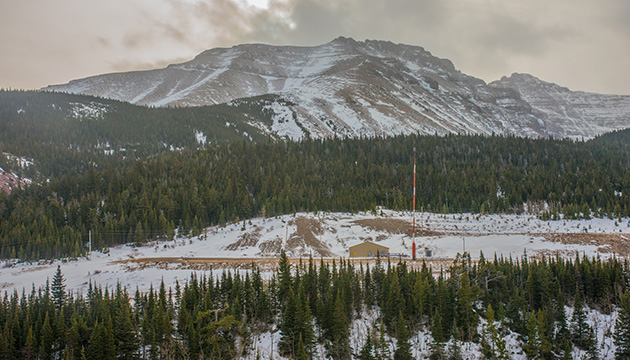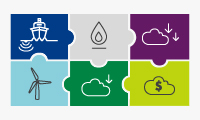Shales
Shales – also known as tight gas and oil – continue to play an important role in meeting global energy demand. Shell uses advanced, proven technologies, including hydraulic fracturing, and follow our operating principles to unlock these resources safely and responsibly.
Highlights in 2017
- In Canada, around a third of our water demand in the Fox Creek facility was met by reusing produced water and waste water.
- We recycled produced water at a development in the Permian asset in the USA to significantly reduce groundwater consumption in hydraulic fracturing.
- Our new Waterton radio tower construction project contributed to local conservation efforts in Canada.
Shell expects shales to become a significant growth priority for the company beyond 2020. We are involved in seven shale projects in North America. In Canada, we are active in the Duvernay and Wet Montney oil plays in Alberta along with the Montney gas play in British Columbia. In the US, we are active in the Marcellus and Utica gas plays in Appalachia, the Delaware Basin portion of the Permian play and a non-operated position in the Haynesville gas play. Outside of North America, we are also active in the Vaca Muerta shale play in Argentina.
Shell upholds five global principles, the Onshore Operating Principles, which govern the onshore shale activities where we operate and where hydraulic fracturing is used. The principles cover safety, air quality, water protection and usage, footprint and engagement with local communities. We review the principles annually and update them as new technologies, challenges and regulatory requirements emerge. We actively engage with communities, industry participants and other groups to bring about improvements in the sector.
In our operations, we continue to take action to address air quality and control fugitive emissions, reducing the potential for our impact on the environment. We implement voluntary methane leak detection and repair programmes across all our shale sites, by primarily using optical gas imaging cameras. We are also looking at next generation detection technologies.
Improving water use in Canada
We have worked for several years to improve water management at our facilities in Canada, first in Groundbirch, British Columbia, and then in Fox Creek, Alberta. In August 2017, the Canadian Association of Petroleum Producers recognised Shell’s efforts as an example of industry best practice for water management.
We have taken steps to reduce our overall fresh water footprint and minimise the impact to other water users from our oil and natural gas operations. We have also been looking at ways to reduce overall water demand through completion design and reusing water. Previously, we agreed with the municipality to use Fox Creek’s treated waste water for hydraulic fracturing and in return we helped upgrade the town’s reclaimed water facilities. In 2017, around a third of Shell’s water demand in the Fox Creek asset was met by produced water and waste water.
We have been pursuing similar initiatives in Groundbirch where we worked with the nearby city of Dawson Creek to build a reclaimed water facility to treat and recycle the city’s waste water for local industries and the community.
Read more about water recyling at our Permian project in Texas.
Addressing environmental sensitivities
When implementing projects, we try to find solutions which minimise impacts on the environment. In 2017, our Waterton Complex in Alberta, Canada, needed to replace a support cable for its communications system. However, the mountainous terrain meant installing a new radio system was the only feasible option. As a result, we had to build two radio towers, including one on a ridge near Waterton Lakes National Park, which involved addressing several environmental sensitivities.
To minimise the environmental impact, we placed the radio tower on the ridge during frozen ground conditions, using track equipment and solar panels. We also installed a watering system for livestock, which protects the habitat in nearby Yarrow Creek, and a new water well with an above ground pipe drilled. We consulted with the local community and landowners throughout the project to ensure it was executed in a way that preserves the local environment and contributes to local conservation efforts.
The communications system works well and was built in collaboration with local landowners and communities.

In Canada, we installed two radio towers at our Waterton shales project, which involved addresing several environmental sensitivities.
 Sustainability at Shell
Sustainability at Shell
 Sustainable development goals
Sustainable development goals
 About our data
About our data
 Energy transition and climate change
Energy transition and climate change